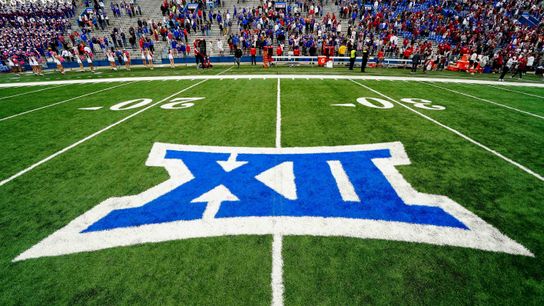It's been an absolutely surreal turn of events for the Big 12. Formed as a marriage of convenience between the Big 8 and the top half of the Southwest Conference, the conference survived obliteration in the summer of 2010, then again in 2021. It was almost exactly two years ago that the Pac-12 passed on detonating the Big 12, and now four Pac-12 members (one of them a former Big 12 member itself) will call the Big 12 home starting in 2024.
Which brings to mind: how is the Big 12 going to make life as a 16-team conference work?
To date, the list of conferences that have made 16 universities happy enough to stick around is non-existent. Utah and BYU were once part of a 16-team WAC, and the top eight schools broke away to form the Mountain West. No one's saying that's going to happen here, but let's not pretend that a league stretching from Tucson to Morgantown (2,067 miles) and Provo to Orlando (2,319 miles) will be easy.
We may have gotten one hint on Saturday.
As part of a post-mortem press conference explaining the school's thought process in leaving the Pac-12 for the Big 12, Arizona State AD Ray Anderson dropped this nugget:
"We're going to try to in the Olympic sports go to divisions and we'll probably do that in football as well. For travel, regionalization makes sense. But it really makes sense in the Olympic sports."
Major college football has moved away from divisions in recent years. In fact, had the Pac-12 remained intact, none of the Power 5 conferences would have divisions by 2024. The ACC will scrap its divisional structure this fall, and the SEC and Big Ten long ago announced plans to do the same upon growing from 14 to 16 for 2024.
But the Big 12 is different, given its structure.
Arizona, Arizona State, BYU, Colorado and Utah are clumped together enough, geographically and historically, that it makes sense to keep them together as much as possible.
UCF, Cincinnati and West Virginia are natural building blocks for an East Division.
The question, as I see it, boils down to Texas. It makes sense for the four Lone Star State schools to play each other as often as possible. TCU, Texas Tech and Baylor have a strong mutual dislike for each other, and Houston is naturally excited about rekindling its Southwest Conference rivalries.
However, I don't see any way the four Texas schools wind up in the same division. The schools in the non-Texas division wouldn't allow it; the recruiting opportunities are simply too important.
Given all that, this is how I see a Big 12 divisional structure breaking down, if indeed the conference goes in that direction.
Big 12 East
Cincinnati
UCF
West Virginia
Iowa State
Kansas
Kansas State
Oklahoma State
Houston
Oklahoma State won't be happy about losing annual games with Tech, TCU and Baylor, but this keeps the Big 8 schools and the AAC schools together while putting every Big 12 school in Texas at least once every other season.
Big 12 West
Baylor
TCU
Texas Tech
Colorado
Utah
BYU
Arizona
Arizona State
The Big 12 had a North-South alignment from 1996 through 2010. In 2011, the 10-team conference played a 9-game round-robin without a championship game, then brought the championship game back in 2017.
To date, not a single Big 12 team has gone 10-0 in a single season since the 2017 resurrection of the title game. 2016 Oklahoma went 9-0 in the final season without a championship game, and in 2022 TCU went 9-0 in the regular season before losing to Kansas State in the Big 12 Championship.
As always, stay tuned to The Scoop for the latest.
